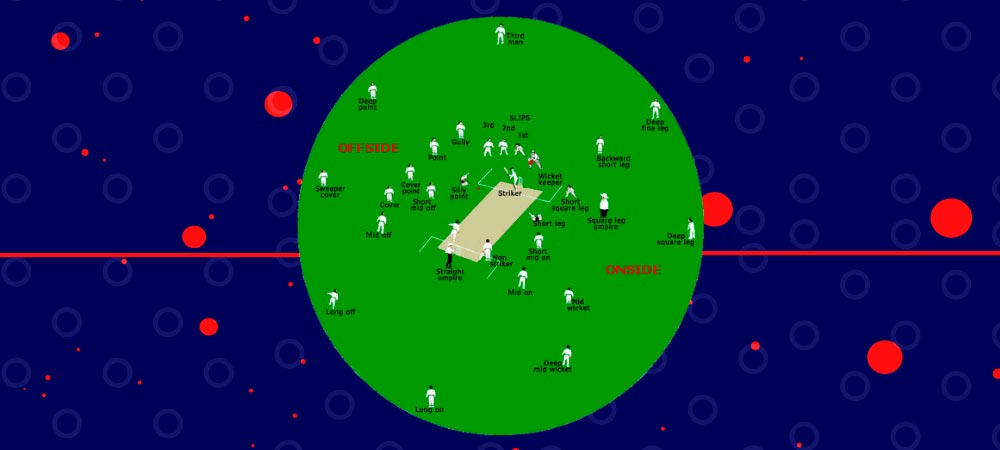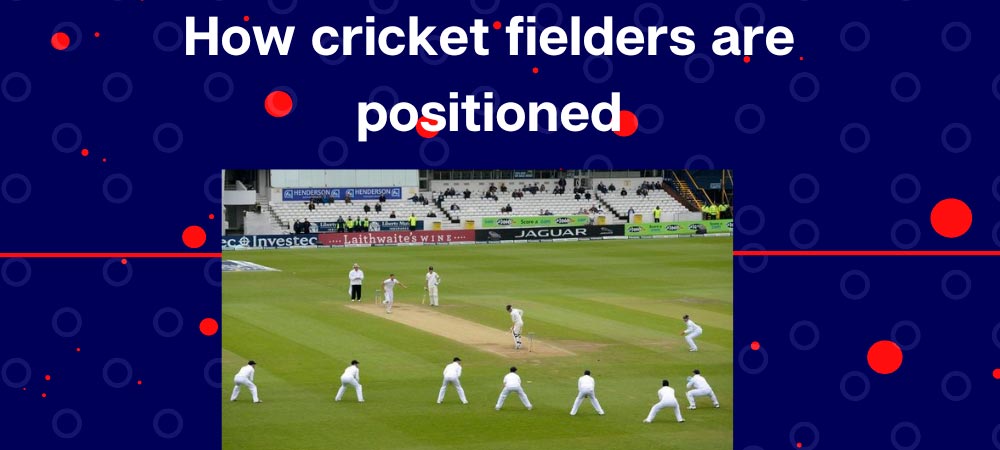You will learn where each of the fielding positions is located on a cricket field and learn what situations each position is required in, how close they are to the bat, and the abilities you will need if your captain puts you there!
Below is a diagram that shows you where each fielding position is…
Cricket Field: Basics

In terms of fielding positions, I consider the क्रिकेट field to be divided into three parts:
Fielders closest to the batter make up the Close Catching Infield. They are all within fifteen yards of the batter!
- The Inner Ring – Here, the fielders are trying to prevent singles from being hit. There is usually no closer than 30 yards between the fielders and the batter in this area! If you’re fielding in the inner ring, make sure that you’re properly balanced as the ball is bowled. You should be ready to spring left or right, in any direction, if the ball is hit towards you. Currently, the second smallest circle in the diagram represents the inner ring.
- The Outfield – A zone that encompasses all zones from the infield to the boundary. By preventing batsmen from hitting boundaries in this area, fielders will largely prevent runs from being scored. Note that the outfield occupies the largest area in the diagram above.
- Point – A silly point is a place on the field near the batter that is very close to the fielder. At 45 degrees to the batsman, they should be standing. In order for the stupid point fielder to avoid stepping on the cricket pitch while the bowler is warming up, he should stay around a metre away from the pitch. Take a look at the illustration below for more clarification!
- Short Leg – A short leg is one that is on the leg side of the batsman, similar to the silly point. Click here to see where short legs are located!
- Point – In point fielding, the fielder stands squarely opposite the wicket on the batsman’s offside. Depending on the speed of the bowling, they choose the distance they stand from the bat. Point fielders are generally advised to maintain a considerable distance between themselves and the batsman when a fast bowler is in action.
- Cover – In addition to fielding at the cover, which is extremely important as many shots are hit into this area. Fielders normally stand on the outer edge of the inner circle when covering the square on the offside. In addition, there is another cover position located next to the point.
- Square Leg – Fielder square to the wicket is located on the leg side of the field. Find the position of this umpire by looking for the umpire away from the bowler’s end of the pitch. You should position yourself close to this umpire because he frequently stands in the square leg stance! Below is a figure showing where to position yourself.
- Deep Point – Defining a deep point as a spot along a boundary that is squarely between the wicket and the boundary line on the offside.
- Mid-Wicket – The deep midwicket position on the leg side is another crucial spot. However, it is very close to the square!
- Long On – The batsman’s leg side is the best fielding position for a boundary-based fielding position! The long on position is located about 5-10 meters on the leg side of a line running down the middle of the pitch!

